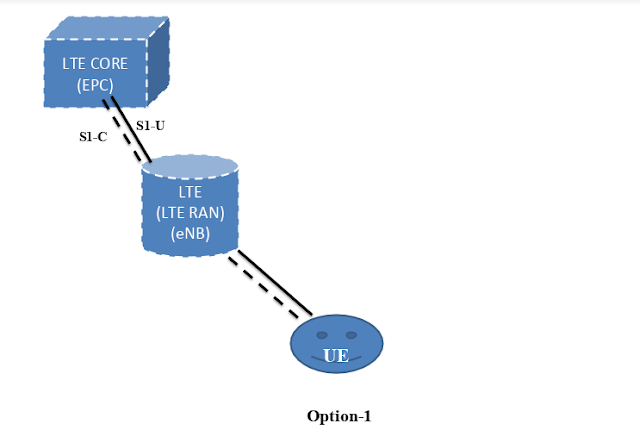Home LTE NB-IoT 5G(NR-NSA) Hi Guys today we are learning about 5G deployment options, if you want to know more about other 5G deployment option please click here Option 3: EN-DC (EUTRA-NR Dual Connectivity) Option 3 represents a network having both LTE and NR radio access, but using only the EPC core of LTE to route the Control signals. In this option, LTE is used as the control plane anchor for NR, and both LTE and NR are used for user data traffic.(user plane). It could also be called as Non-Standalone (NSA) NR in Evolved Packet System. The only difference between Options 3 and 3A is based on whether the user plane data is sent to NR directly or via the LTE RAN. This standardization was concluded in 3GPP Rel-15. This is a possible first step in the migration towards 5G-SA. This option wi...




Hello team, i would like to write the article about Block chain. please help me to publish it.
ReplyDeletePlease share your Article on aarya.pinal At gmail.com
DeleteUltra IoT C-SGN Overview
ReplyDeleteThe Ultra IoT C-SGN (CIoT Serving Gateway Node) is a combined node EPC implementation option that minimizes the number of physical entities by collocating EPS entities in the control plane and user plane paths. C-SGN combines the MME, P-GW and S-GW functions to provide a highly optimized CIoT solution.
The Ultra IoT C-SGN runs on virtualized environments to support Cellular IoT (CIoT) traffic. The CIoT EPS Optimizations in this release provide improved support of small data transfer.
The topics in this chapter include:
Overview of IoT
CIoT EPS Optimizations
Overview of IoT
The Internet of Things (IoT) is a computing concept where everyday objects have internet connectivity and they can collect and exchange data. The IoT network comprises of a wide variety of physical devices, vehicles, buildings, and any other devices or objects used in our daily lives. IoT is expected to bring a revolution of tremendous growth opportunities by bringing millions of new set of devices, applications and new set of enablement of protocols/technologies into the network.
The IoT devices use MTC (Machine Type Communication). The key objective is to provide solutions to support high efficient handling of tracking devices using small data transmissions for ultra-low complexity, power constrained, and low data-rate IoT devices, called CIoT devices. The main requirements for IoT devices is EPS optimization for small data transfer.
NarrowBand IoT (NB-IoT) is a narrowband radio technology that is optimized for IoT in 3GPP Release 13. Optimizations on the core network are applicable to both NB-IoT RAT and EUTRAN RAT (for eMTC / LTE-M devices).
CIoT Overview
Platform Requirements
Licensing Requirements
Standards Compliance
CIoT Overview
Cellular Internet of Things (CIoT) technology is an important branch of IoT. The CIoT devices use small data transmissions for ultra-low complexity as they also use low data-rates and have power constraints. While the number of CIoT devices in the network might increase exponentially, the data size per device remains small.
The following enhancements are required to support CIoT devices:
Minimize system signaling load over the radio interface
Provide adequate security to the EPS system
Improve battery life of the devices
Support delivery of IP data
Support delivery of non-IP data
Support of SMS
Extended coverage
Low cost
The EPS optimized for CIoT supports different traffic patterns as compared to normal UEs and supports only a sub-set and necessary functionalities as compared with the existing EPS core network, in a single logical entity known as the CIoT Serving Gateway Node (C-SGN). The C-SGN is a new node specified for optimizations that consolidates functions from control plane node (MME) and user plane nodes (S-GW, P-GW, and SAE-GW).